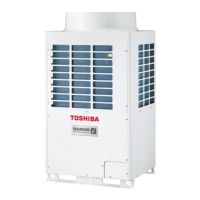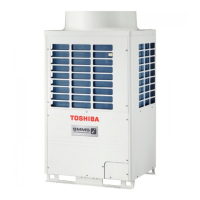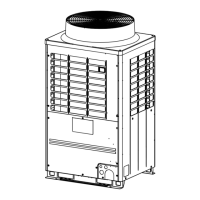K
keithowenAug 13, 2025
What does error E16 mean on my Toshiba Heat Pump?
- Hheidi47Aug 13, 2025
If your Toshiba Heat Pump displays error code E16, this indicates either a capacity overload (00) or an issue with the number of connected units (01~).

What does error E16 mean on my Toshiba Heat Pump?
If your Toshiba Heat Pump displays error code E16, this indicates either a capacity overload (00) or an issue with the number of connected units (01~).
What does error E20 mean on a Toshiba Heat Pump?
Error code E20 on your Toshiba Heat Pump indicates that another line is connected during automatic addressing. This could mean either another outdoor line (01) or another indoor line (02) is connected.
What does error E19 mean on my Toshiba Heat Pump?
Error code E19 on your Toshiba Heat Pump indicates an issue with the header outdoor units. Specifically, it could mean that there is no header unit (00) or that there are two or more header units (02).
What does it mean if my Toshiba Heat Pump shows error code E06?
If you see error code E06 on your Toshiba Heat Pump, it indicates a decrease in the number of indoor units that are normally received.
What does error code E23 mean for a Toshiba Heat Pump?
If your Toshiba Heat Pump is showing error code E23, it indicates a sending error between the outdoor units during communication.
What does it mean when my Toshiba Heat Pump displays error code E25?
If your Toshiba Heat Pump displays error code E25, it means there is a duplicated follower outdoor address setup.
What does error code E26 signify on a Toshiba Heat Pump?
If your Toshiba Heat Pump shows error code E26, it indicates a decrease in the number of outdoor units that are normally received.
What does error E28 mean on my Toshiba Heat Pump?
If your Toshiba Heat Pump displays error code E28, it indicates an error with the follower outdoor unit. The error code will show the detected outdoor unit number.
| Brand | Toshiba |
|---|---|
| Model | Super MMY-MAP0801HT7 |
| Category | Air Conditioner |
| Language | English |
Explains the meaning of warning and caution symbols used in the manual.
Advises professional installation to prevent hazards like fire, electric shock, or leaks.
Emphasizes qualified electricians, proper circuits, earth leakage breakers, and grounding.
Details power supply specifications and electrical wiring design for units.
Explains the automatic process for setting indoor unit addresses.
Describes manual address setup using the remote controller and system configuration.
Lists required pre-checks before performing test operation.
Details test operation methods using remote control and PC boards.












